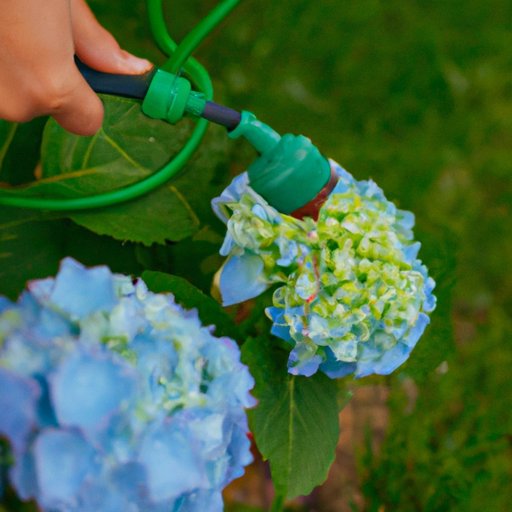Introduction
If you’re looking to add a pop of color and texture to your garden, consider adding some hydrangeas! These beautiful flowering shrubs are popular for their large showy blooms that come in shades of pink, blue, purple, and white. With a few simple steps, you can ensure that your hydrangeas stay healthy and vibrant all year round.
Selecting the Right Location
When selecting an area to plant your hydrangea, it’s important to choose a location that will provide the right amount of light and soil drainage. Hydrangeas prefer partial to full shade, so try to find a spot that gets dappled sunlight throughout the day. They also need well-draining soil, so make sure the site isn’t prone to standing water or flooding.
Watering Properly
Hydrangeas need plenty of water to thrive, but it’s important not to over water them. It’s best to give them about one inch of water per week, either from rainfall or manual watering. If there is a period of dry weather, you may need to increase the amount of water slightly to make sure the soil stays moist. However, too much water can cause root rot, so be sure to check the soil often to make sure it isn’t too wet.
Fertilizing Regularly
Fertilizing your hydrangeas regularly is key to keeping them healthy and producing plenty of flowers. Use a balanced fertilizer, such as 10-10-10 or 12-12-12, and apply it according to package instructions. For established plants, fertilize once a month in the spring and summer and every two months in the fall and winter. For newly planted hydrangeas, wait until the second season before fertilizing.
Pruning with Care
Pruning your hydrangeas is an important part of keeping them healthy and encouraging more blooms. The best time to prune is late winter or early spring, before the new growth begins. Be sure to remove any dead, diseased, or damaged branches and shape the plant as desired. You can also prune the stems back to encourage more blooms and larger flower clusters.
Protecting from Pests
Hydrangeas can be susceptible to pests, such as aphids, mites, and scale insects. To prevent pest infestations, inspect your plants regularly for signs of damage or discoloration. If you do notice signs of pests, take appropriate action right away. This could include spraying the plants with insecticidal soap or neem oil, or introducing beneficial insects, such as ladybugs, to feed on the pests.
Conclusion
With the proper care and attention, hydrangeas can bring beauty and life to any garden. Start by selecting the right location and make sure to water, fertilize, and prune your plants regularly. Also, keep an eye out for pests and treat them promptly if needed.


